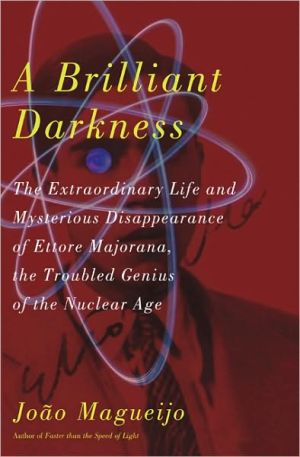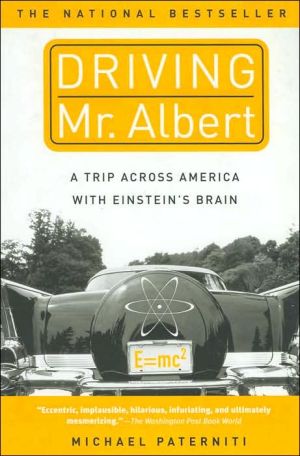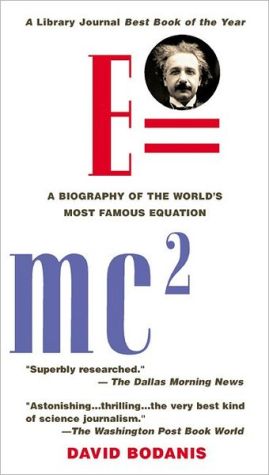A Brilliant Darkness: The Extraordinary Life and Mysterious Disappearance of Ettore Majorana, the Troubled Genius of the Nuclear Age
On the night of March 26, 1938, nuclear physicist Ettore Majorana boarded a ship, cash and passport in hand. He was never seen again. In A Brilliant Darkness, theoretical physicist João Magueijo tells the story of Majorana and his research group, “the Via Panisperna Boys,” who discovered atomic fission in 1934. As Majorana, the most brilliant of the group, began to realize the implications of what they had found, he became increasingly unstable. Did he commit suicide that night in Palermo?...
Search in google:
One of the greatest mysteries of twentieth-century science: a tormented genius discovers a key element of atomic fission, then disappears forever Publishers Weekly Part mystery, part biography and part nuclear physics primer, Magueijo’s book takes readers through an investigation into the melodramatic life, work and bizarre disappearance of a troubled young physicist after he boarded a ship in Palermo on the cusp of WWII. A “twisted prodigy raised by domineering parents, Majorana (born 1906) became one of the Via Panisperna boys, a group of raucous young physicists nurtured by fission pioneer Enrico Fermi. Majorana discovered a subatomic particle called the Majorana neutrino, but refused to publish any papers and so never got credit for his discovery. Magueijo’s examination of Majorana, aided by interviews with his living relatives, reveals a troubled, confounding man whose disappearance has inspired as many conspiracy theories as the Roswell incident. Whether Majorana committed suicide, joined a monastery, or ran off to Argentina, whether he deserves a Nobel Prize (if he’s still alive somewhere) as Magueijo, a theoretical physicist at Imperial College, London (Faster than the Speed of Light), insists, it’s clear his life and approach to his work were both singular and outrageously strange. Photos, illus. (Dec.)
\ Publishers WeeklyPart mystery, part biography and part nuclear physics primer, Magueijo’s book takes readers through an investigation into the melodramatic life, work and bizarre disappearance of a troubled young physicist after he boarded a ship in Palermo on the cusp of WWII. A “twisted prodigy raised by domineering parents, Majorana (born 1906) became one of the Via Panisperna boys, a group of raucous young physicists nurtured by fission pioneer Enrico Fermi. Majorana discovered a subatomic particle called the Majorana neutrino, but refused to publish any papers and so never got credit for his discovery. Magueijo’s examination of Majorana, aided by interviews with his living relatives, reveals a troubled, confounding man whose disappearance has inspired as many conspiracy theories as the Roswell incident. Whether Majorana committed suicide, joined a monastery, or ran off to Argentina, whether he deserves a Nobel Prize (if he’s still alive somewhere) as Magueijo, a theoretical physicist at Imperial College, London (Faster than the Speed of Light), insists, it’s clear his life and approach to his work were both singular and outrageously strange. Photos, illus. (Dec.)\ \ \ \ \ Library JournalAhh, to be a fly on select walls of European physics research during those heady years of the early 20th century. Ettore Majorana (1906–38) was part of that elite group of men and women tackling theoretical physics, which was more math than lab science. Theoretical physicist Magueijo (Faster Than the Speed of Light) paints the life of a twenty something math prodigy who joined Enrico Fermi, Emilio Segre, and the other "Via Panisperna Boys" who in 1934 discovered nuclear fusion. The author could have easily fallen into the jargon of his profession to describe the work of a fellow scientist, but he does not. His clear explanation of Majorana's insight into nuclear physics, often accompanied with drawings and illustrations, will appeal to a wide audience. VERDICT Like most biographers, Magueijo treats Majorana's life and mysterious disappearance at the age of 31 in 1938 with respect mixed with admiration. The result will affect both science history buffs familiar with the man and his work and general readers who may never have heard of him. Recommended for public and academic collections.—Margaret F. Dominy, Drexel Univ. Lib., Philadelphia\\\ \








